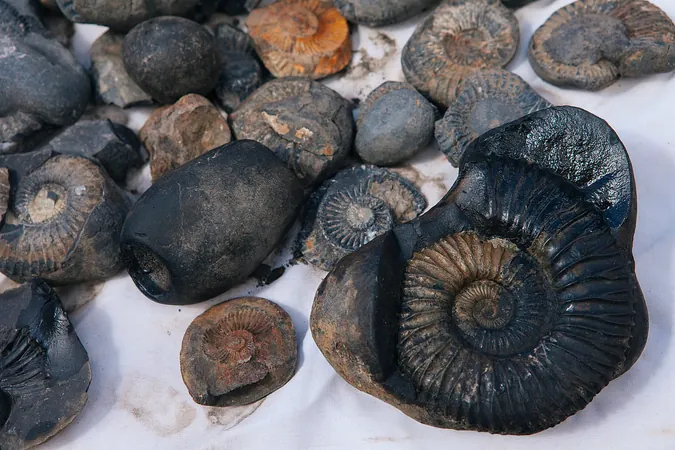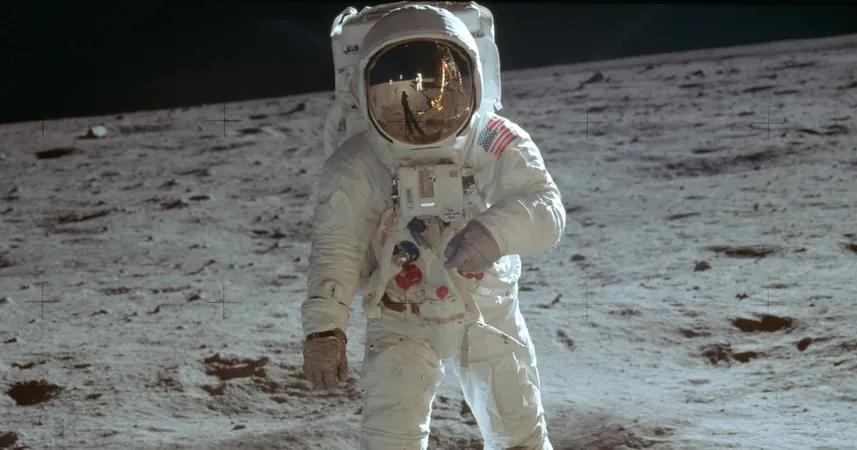
Unraveling the Mysteries of Earth's Greatest Extinction: Why Species Became Strikingly Similar
2025-04-07
Author: Sophie
Introduction
Around 252 million years ago, Earth witnessed the Great Dying, the most catastrophic extinction event in its history. This cataclysm obliterated approximately 80-90% of marine species and around 70% of land-dwelling vertebrate families. Following this massive environmental upheaval, fossil records reveal an intriguing phenomenon: the surviving organisms exhibited remarkable similarities in morphology and characteristics, irrespective of their geographical locations. Researchers have been baffled by this 'global sameness,' and a new study published in the journal Science Advances may finally shed light on this enigma.
Taxonomic Homogenization
This research identifies a process known as taxonomic homogenization, whereby the species composition across diverse ecological communities begins to mirror one another over time. Surprisingly, the scientists suggest that this convergence is largely driven by significant environmental changes rather than typical ecological interactions such as predator-prey dynamics.
A Vivid Analogy
PhD candidate Jood Al Aswad, one of the authors, illustrated this phenomenon using a vivid analogy: imagine if a cataclysmic event, like a massive volcanic eruption, allowed kangaroos—currently native to Australia—to thrive in regions as distant as Antarctica, Egypt, and even California. Such a scenario would exemplify the bewildering spread of similar life forms across the globe after the extinction event.
Post-Extinction Ecosystems
The research indicates that prior to the Great Dying, ecosystems were rich and diversified. However, post-extinction, these communities thinned out and began to resemble one another, a change scientists have termed the 'dulling event.'
Factors of Biological Similarity
Two potential factors contributing to this biological similarity were proposed by the research team. The first is ecological release—when predation pressure is removed, allowing surviving species to flourish unchecked. The second factor is a shift in environmental conditions that created new suitable habitats for certain species to thrive.
Modeling Ancient Marine Life
To validate these hypotheses, the team concentrated on marine life, employing a model that reconstructed ocean conditions—such as oxygen levels and temperatures—during and after the extinction period. They augmented their analysis with physiological data from modern marine invertebrates like clams and snails that relate to species that either survived or went extinct during the Great Dying.
Research Findings
Through this model, researchers were able to simulate how ancient species may have adapted to shifts in environmental conditions. The findings revealed that more resilient species, such as mollusks and other hardy invertebrates, were not merely lucky survivors but were physiologically better adapted to the drastic changes in their environments.
Conclusion and Future Research
Jonathan Payne, a professor at Stanford Doerr School of Sustainability and another author of the study, remarked, 'Our study has provided a simple environmental explanation, rather than an ecological one, for why certain survivors of the extinction prospered and why homogenization happened on a global scale.'
Excitingly, the team plans to extend their model to assess how environmental changes relate to other historical mass extinction events, including the infamous Cretaceous extinction that led to the demise of the dinosaurs roughly 65 million years ago.
Implications for Today’s Biodiversity Crisis
This groundbreaking study could also offer vital insights into the current biodiversity crisis occurring today. Al Aswad warned, 'With climate change driven by human activities, there are serious concerns that we could witness a taxonomic homogenization of organisms in today’s oceans, mirroring the patterns observed after the Great Dying.'
The implications of this research extend far beyond understanding ancient extinctions; they could serve as crucial indicators for how contemporary ecosystems might respond to ongoing environmental changes, reminding us of the interconnectedness and fragility of life on Earth.









 Brasil (PT)
Brasil (PT)
 Canada (EN)
Canada (EN)
 Chile (ES)
Chile (ES)
 Česko (CS)
Česko (CS)
 대한민국 (KO)
대한민국 (KO)
 España (ES)
España (ES)
 France (FR)
France (FR)
 Hong Kong (EN)
Hong Kong (EN)
 Italia (IT)
Italia (IT)
 日本 (JA)
日本 (JA)
 Magyarország (HU)
Magyarország (HU)
 Norge (NO)
Norge (NO)
 Polska (PL)
Polska (PL)
 Schweiz (DE)
Schweiz (DE)
 Singapore (EN)
Singapore (EN)
 Sverige (SV)
Sverige (SV)
 Suomi (FI)
Suomi (FI)
 Türkiye (TR)
Türkiye (TR)
 الإمارات العربية المتحدة (AR)
الإمارات العربية المتحدة (AR)